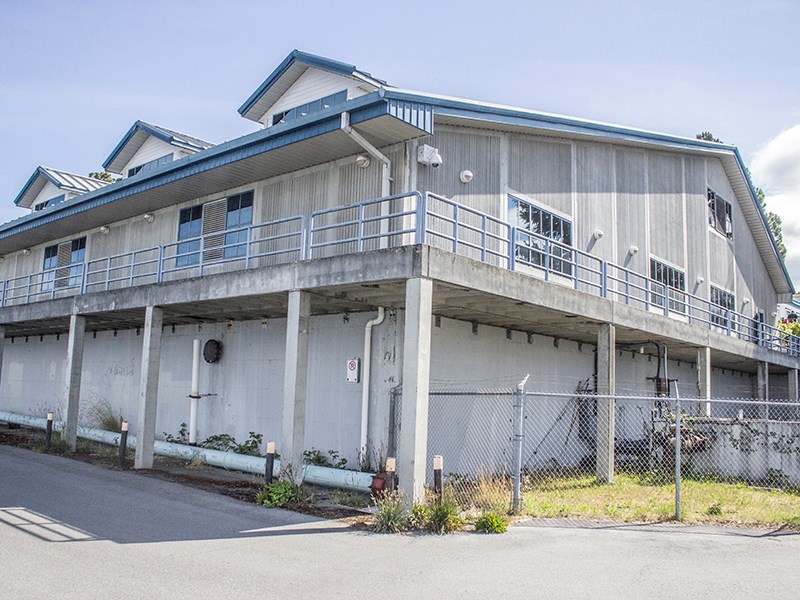To describe his feelings for City of Powell River’s recent conditional approval from the province to build a consolidated wastewater treatment plant, mayor Dave Formosa had one word.
“Hallelujah,” said Formosa.
Though not handed down from on high, environment minister Mary Polak’s June 3 letter to the city did arrive, almost a year to the day since it was submitted.
“I commend the city on its success in developing a comprehensive plan for the long-term management of liquid waste,” wrote Polak in the letter. “I am satisfied that the direction and the commitments in the liquid waste management plan are supportable and the public and first nations review and consultation process meets ministry requirements.”
Before the city moves forward, it will have to conduct a renewed inflow and infiltration reduction plan with costs, a cost-benefit analysis and specific targets to meet municipal wastewater goals.
“I’m ecstatic that we’ve got to this point,” said city director of infrastructure Tor Birtig. “It was a long and complicated process.”
Birtig estimated that if everything were to fall into place and the city was able to get the grant funding, the project would still be five years away.
The location of a proposed consolidated plant for all neighbourhoods has already been established. The city will purchase a 10-acre parcel around the current quarter acre where an existing Townsite wastewater treatment plant is located, a move that will allow the new facility to use the old facility’s outfall pipe in Malaspina Strait.
When the plans for the plant are given final approval, said Birtig, the city will purchase the 10-acre parcel from PRSC Land Development, a partnership between the city and Tla’amin Nation. The parcel is south of the Catalyst viewpoint to below Laburnum Avenue.
It has been 18 years since the city started developing the liquid waste management plan. The process began in 1998 when the city realized the recently constructed Westview Wastewater Treatment plant was not working the way it should have been, and the Townsite plant, built in 1978, was out of date.
A consolidated plant to be built on the old waste-transfer site near Willingdon Beach was approved by the environment ministry in 2004.
Despite the fact that the community agreed in 2004 to build a consolidated plant to replace the city’s three treatment centres in Westview, Townsite and Wildwood, the plan changed to the city partnering with Catalyst Paper Corporation to use co-treatment on Powell River’s liquid waste.
Councillor Karen Skadsheim, now chair of the city’s liquid waste management steering committee, was a vocal opponent to Catalyst co-treatment.
The Catalyst co-treatment plan was abandoned in 2015 for the city’s proposed consolidated treatment plant.
Skadsheim added that she is not surprised to hear some people say they did not know what stage provincial approval for the consolidated wastewater treatment plant was at.
“It’s been dormant for a year, waiting for the ministry of environment to come back to us,” she said.
Formosa said he would like the city to move quickly to choose a type of treatment system, create a budget and start looking for senior government grants to fund the project.
“The fact that the Trudeau government has said a big part of its mandate is rebuilding the infrastructure of this country, the sooner we get an approved shovel-ready project, we can be right there looking for money,” said Formosa.
Birtig said his staff will start doing some predesign work and start looking for grant funding from senior government for the project that could range in price between $25 million to $30 million.
“That kind of money, the way it’s looking now, is not going to be available through these normal granting opportunities,” said Birtig. “We may have to borrow some funds. We have to work on funding opportunities.”
While there has not yet been any agreements signed between the federal and provincial governments on infrastructure money, it is widely expected that the first round of funding for next year will be for upgrades, while the following year will be for new construction.
“The timing is perfect,” said Formosa.
Birtig said his staff will begin work on different options for the system and select the one best suited for Powell River’s needs.
Skadsheim said the provincial regulations for treating wastewater call for the construction of a secondary treatment process where the sewage is passed through screens to remove biosolids and then processed through a clarifier that has bacteria and protozoa inside to consume biodegradable soluble organic contaminants.
The Townsite treatment plant currently provides secondary treatment, while the newer Westview plant provides tertiary treatment and uses membrane bioreactors to clean the wastewater before it is discharged into the ocean.
“What I’d like to see is a secondary treatment plant with a view to adding tertiary treatment at a later date,” said Skadsheim. She said that may be even more possible if the city is able to sell the treated water to other industries as a cost-recovery option.
Birtig said that from his point of view, it is too soon to start to talk about what kind of system would be best suited.
“We want to be economical and use the best processes for the town,” said Birtig. “There’s a lot of talk about resource recovery. There’s all kinds of different processes out there.”
Birtig said one thing working against that idea is that Powell River may not produce the kind of volume needed to make the investment in extraction technologies viable.
Skadsheim said the recently completed Sechelt tertiary plant cost close to $25 million, has a small footprint, and has the capacity for 9,000 people. Powell River’s plant would need to be able to service 13,000-plus.
“Even if we built the same plant as Sechelt, it would have to be larger capacity because of more people,” said Skadsheim, “and that would make it more expensive.”



